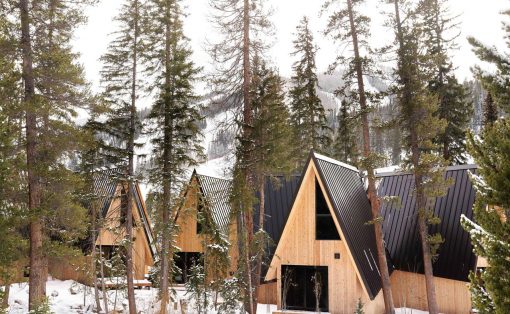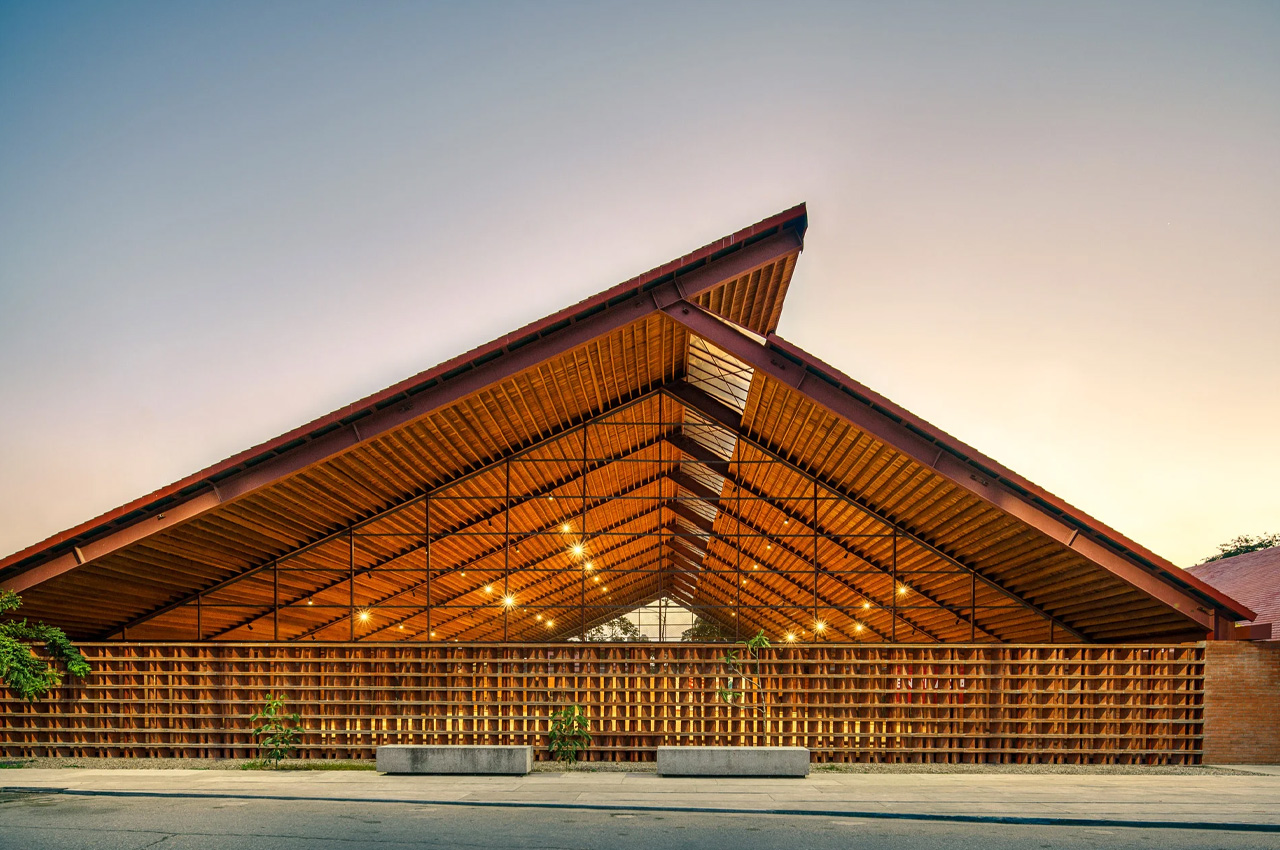
Mexico-based studio Colectivo C733 has built a brick music school called the Casa de Música in Nacajuca, Mexico. The 1325-square-meter school includes two structures and a lofty cantilevered roof created from coconut wood. It “provides a space for social gatherings with warm materials and natural ventilation, while musicians benefit from spacious, isolated classrooms with state-of-the-art equipment,” said C733.
Designer: Colectivo C733
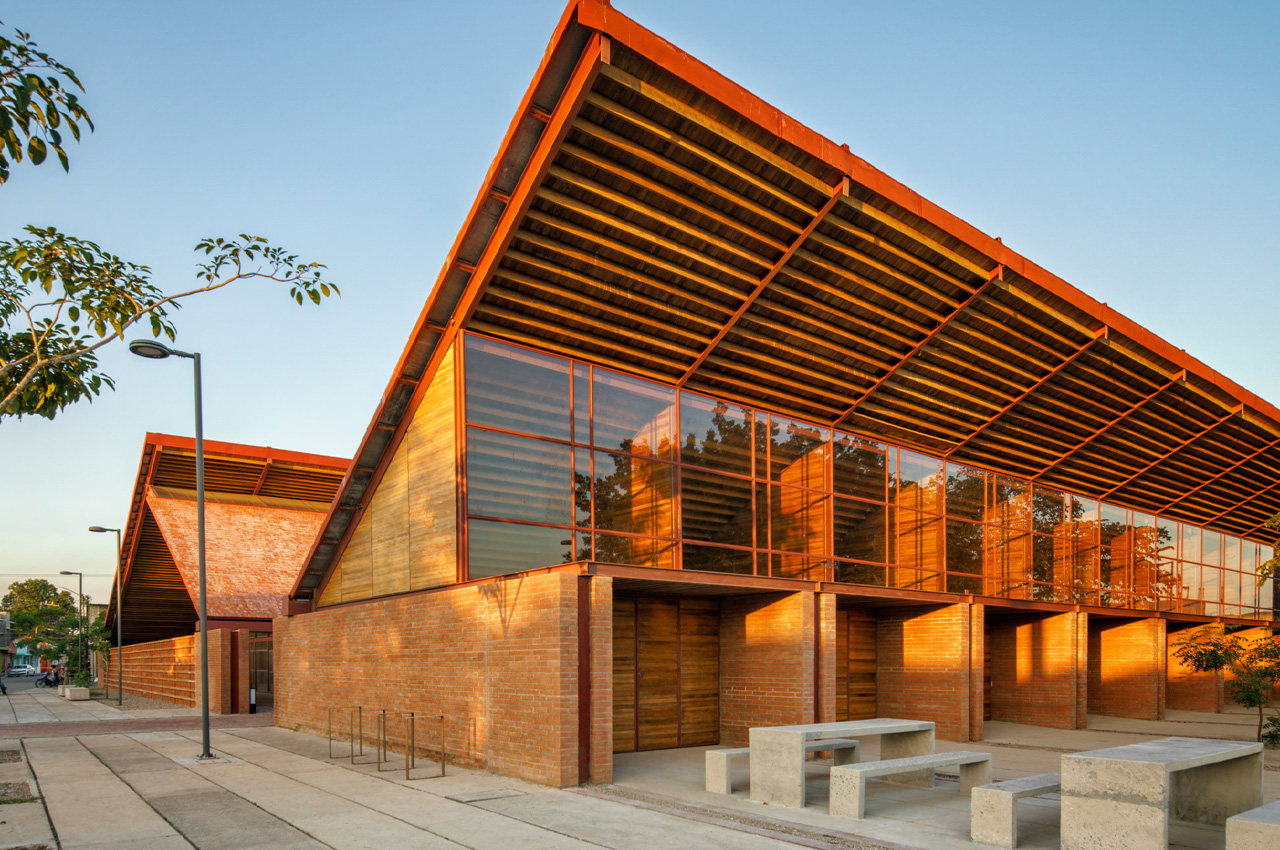
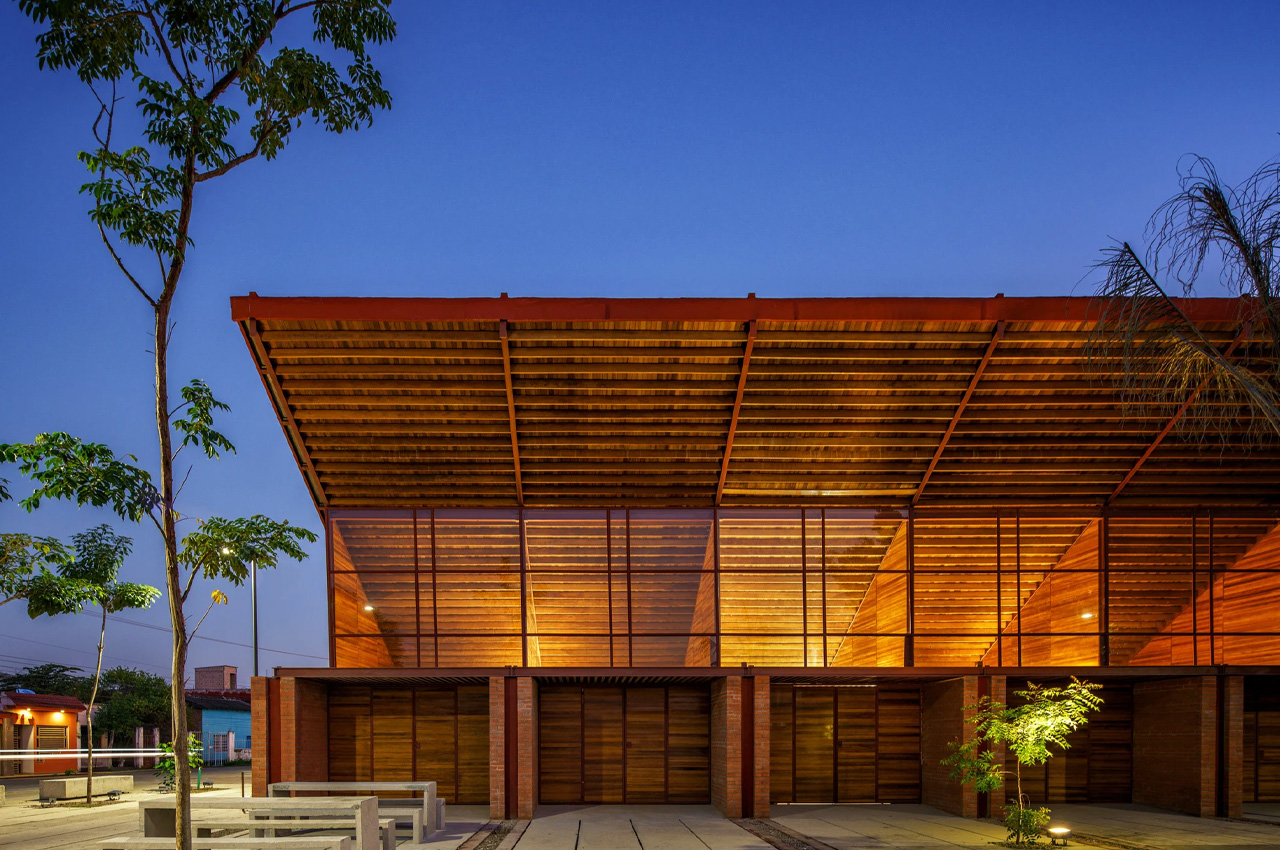
The school is a part of the state’s urban development program and includes two volumes that are connected via a public boulevard. The larger structure is an open-plan community center that features a massive offset gable roof. One roof plane extends over the ridge line, and cantilevers over the skylight and the opposite roof plane. The north and south sides of the building are provided support by a series of double brick walls that house the 24-meter trusses. While the west side of the facility features rectangular glass panels which are protected from the street by means of a porous brick wall. The east end houses a service core.

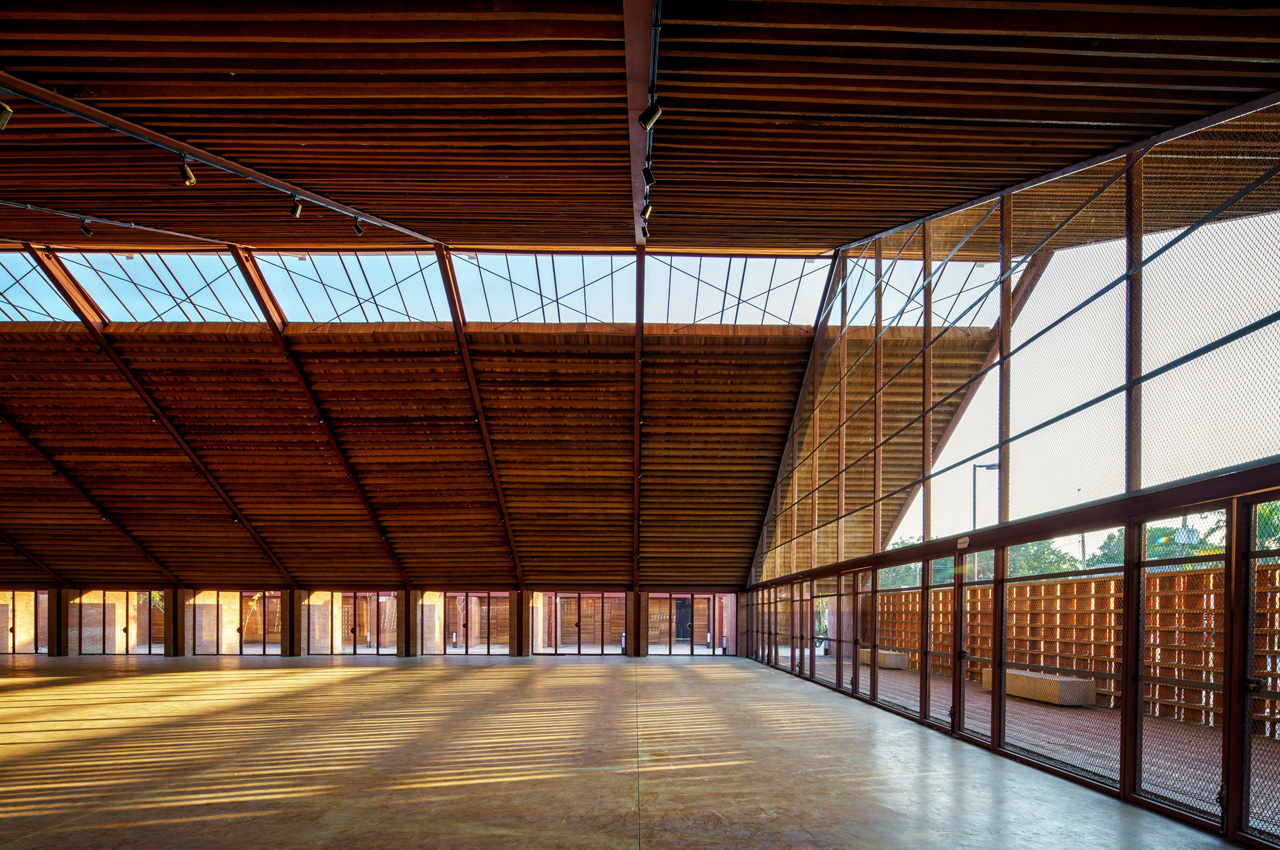
The social space also accommodates a mezzanine stage for workshops and local musicians. The smaller second volume, on the other hand, functions as the music school. It includes eight classrooms, a cafeteria, restrooms, and management offices. “The sloping roof of the building creates a double-height space in each of these areas, with an upper terrace offering views of the treetops,” said the team. The structures have been equipped with local coconut wood, brick partitions, and clay tiles that provide the space with some warmth, acoustic control, and natural freshness.
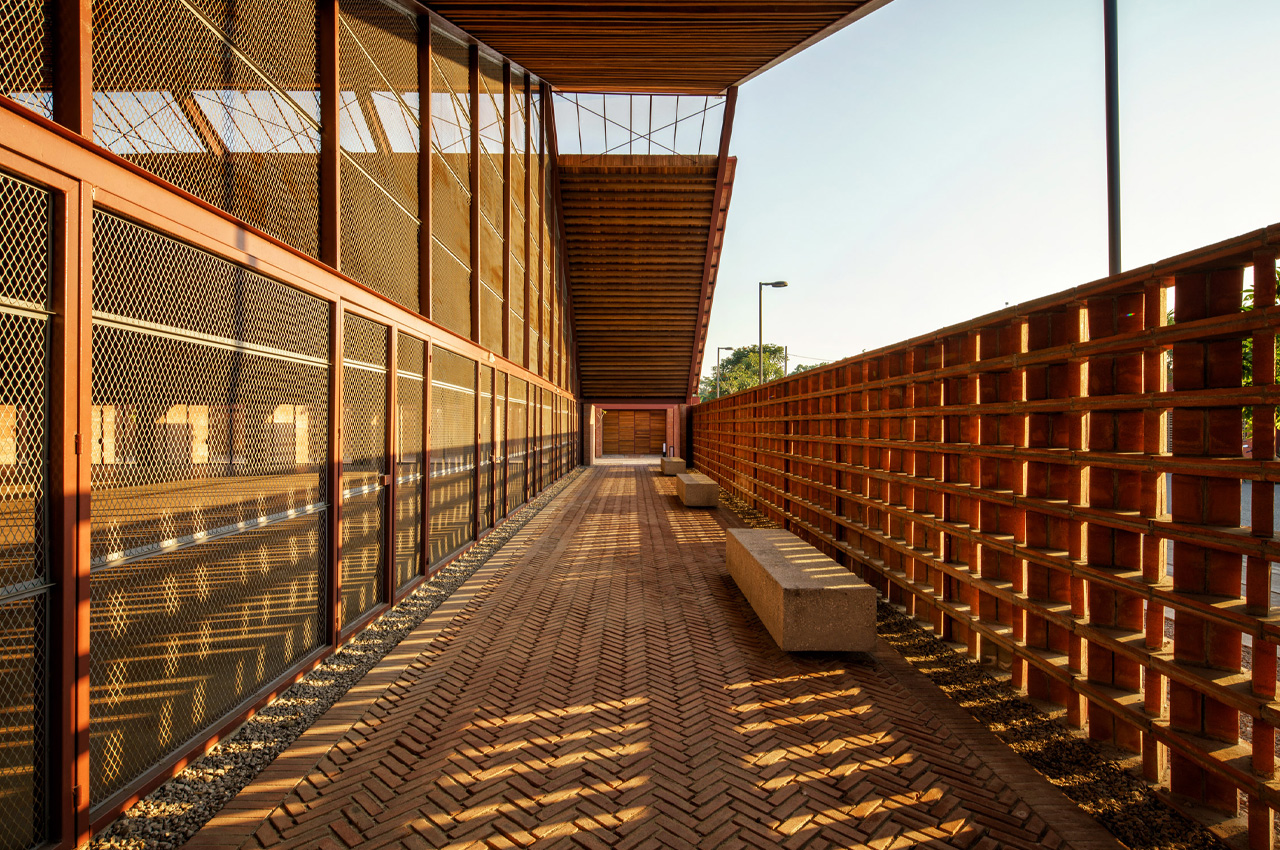

“The project draws inspiration from the traditional Mesoamerican pocho dance and contemporary expressions, incorporating warm materials, natural ventilation, and a focus on local resources to create a space that pays tribute to its location and enhances existing elements,” the team said.”It is essential that projects pay tribute to their location, particularly when they have the potential to highlight what already exists.” The locally sourced coconut wood used has the ability to capture carbon dioxide, thereby generating a smaller carbon footprint as compared to other materials. It also promotes craftsmanship and employment for the local workforce.







